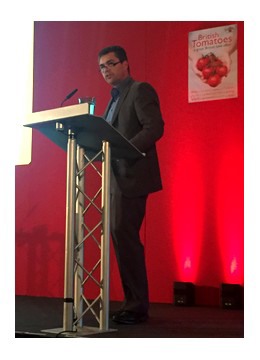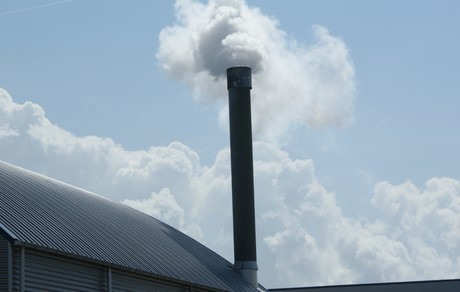 Recently, Robert Heikens founded Energy4Growth, a new joint venture company with UK based greenhouse project builder CambridgeHOK. During the recent British Tomato Conference last week Thursday, they emphasized the advanced potential of using cogeneration in British horticulture. "The technology is not new, and has proven itself for many years already," said Heikens. "However, we approach the technology from a different perspective, by creating a total concept for a grower and taking the entire energy and CO2 distribution network into account. In this area, many things can be improved and become more efficient. We focus on creating a better total concept that will make cogeneration even more efficient."
Recently, Robert Heikens founded Energy4Growth, a new joint venture company with UK based greenhouse project builder CambridgeHOK. During the recent British Tomato Conference last week Thursday, they emphasized the advanced potential of using cogeneration in British horticulture. "The technology is not new, and has proven itself for many years already," said Heikens. "However, we approach the technology from a different perspective, by creating a total concept for a grower and taking the entire energy and CO2 distribution network into account. In this area, many things can be improved and become more efficient. We focus on creating a better total concept that will make cogeneration even more efficient."The importance of smart heat distribution
One of the spear points for Energy4Growth is heat distribution. "The importance of smart heat distribution is often forgotten at a nursery when a CHP is installed," said Heikens. "Yet, a clever heat distribution network is the most important thing."Heikens explained that it is not as simple as replacing a gas boiler with a CHP. "When we design an energy network for a new project, we take a closer look at the entire greenhouse project, taking everything into account, from the desired temperatures and humidity inside the greenhouse, to the size of the structure in terms of height, the application of buffer technologies, etcetera. Eventually, successful cogeneration relies on a different heat distribution network than a standard system with a gas boiler."
"When using a CHP, the focus usually lies on running the engine as much as possible in order to create maximum ROI and meet the desired running hours," said Heikens, when refraining to a typical standard situation. "This results in the situation that low grade energy (heat) is not always used as its not needed sometimes. Furthermore, during warm summer days, much heat is also not used. This is all the result of a lack of good buffer and distribution systems. Therefore we have designed several systems and distribution layouts that tackle these situations and improve the efficiency even more."

CO2
Another focus of Energy4Growth lies in a more efficient application of CO2. "During our presentation, we stressed the importance of proper CO2 application in British nurseries. Many UK growers are aware of the fact that CO2 is a vital element for commercial greenhouse crops, but when they are looking to improve the production, their focus is not always on CO2. This is a result of the fact that they do not always have enough CO2 available or the high cost of the additional CO2."According to Heikens, the CO2 distribution with cogeneration can be improved. "We look at the total greenhouse concept and design smart and efficient CO2 distribution networks, again we take several factors into account, such as the design of the greenhouse, CO2 demand and supply, but also other factors such as the height of the glasshouse. It is often forgotten that they are getting higher and wider, so we should also increase and improve things such as the airflow in order to achieve the best results from the CO2 that is dosed."
CO2 from Biomass
Next to cogeneration, biomass heating is also a popular energy application in British horticulture. "Thanks to the Renewable Heat Incentive, many UK growers have shown interest in biomass, or have already installed biomass at their nurseries. The only disadvantage of biomass is the lack of usable CO2 from the exhaust flue. But according to Heikens, Energy4Growth has developed and improved an existing technology, that can extract usable CO2 from the exhaust flues of a biomass boilers. "We have currently one installation in operation, the system is dosing 300 kg/sq.m. CO2 from biomass that is >99 % pure, and there is also an option to store the CO2 directly. This system also offers great advantage to UK growers, as the CO2 coming from a biomass flue gas cleaning system is cheap compared to the alternatives."
 For more information:
For more information:Energy4Growth
Robert Heikens
[email protected]
www.energy4growth.com
